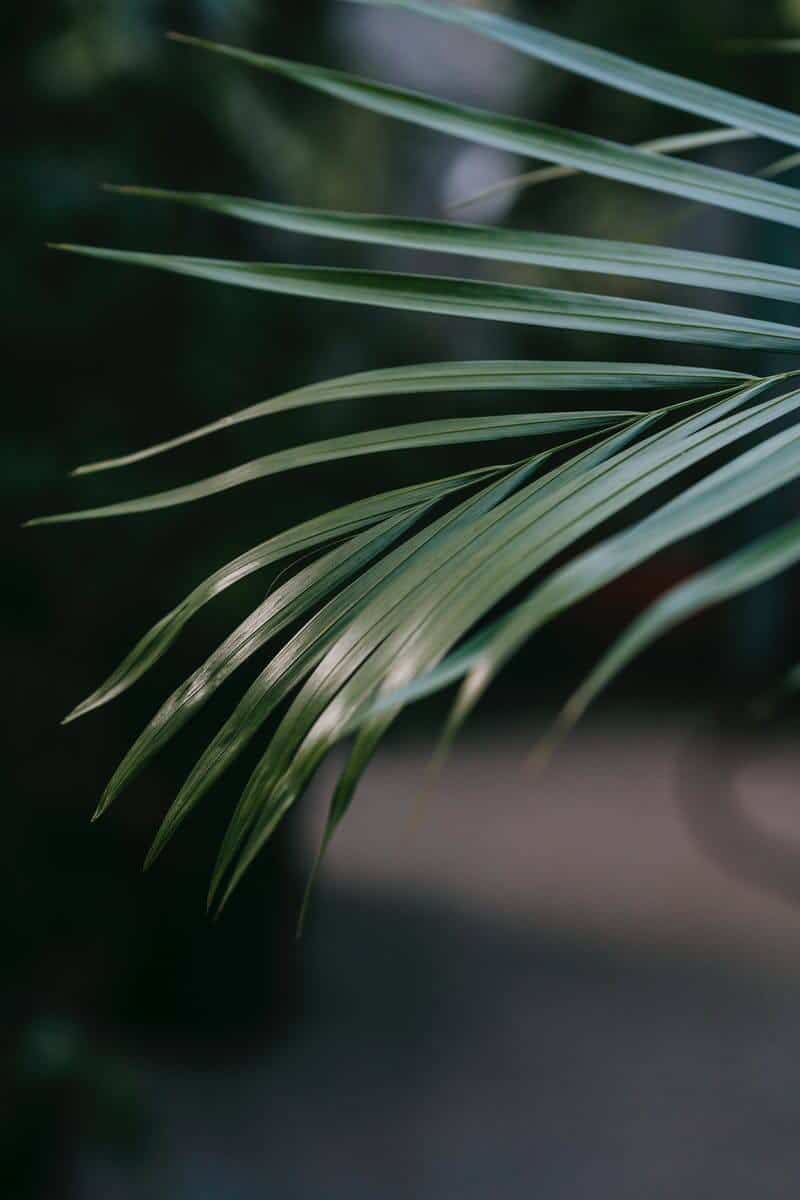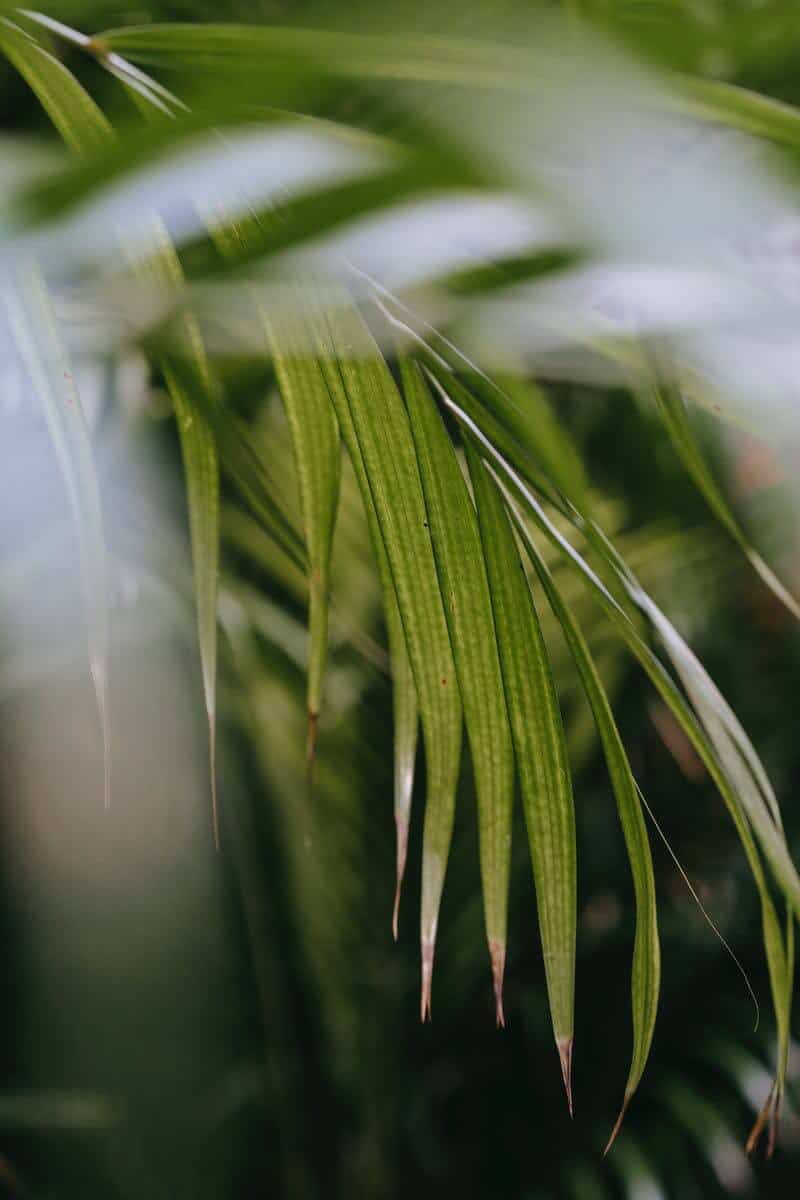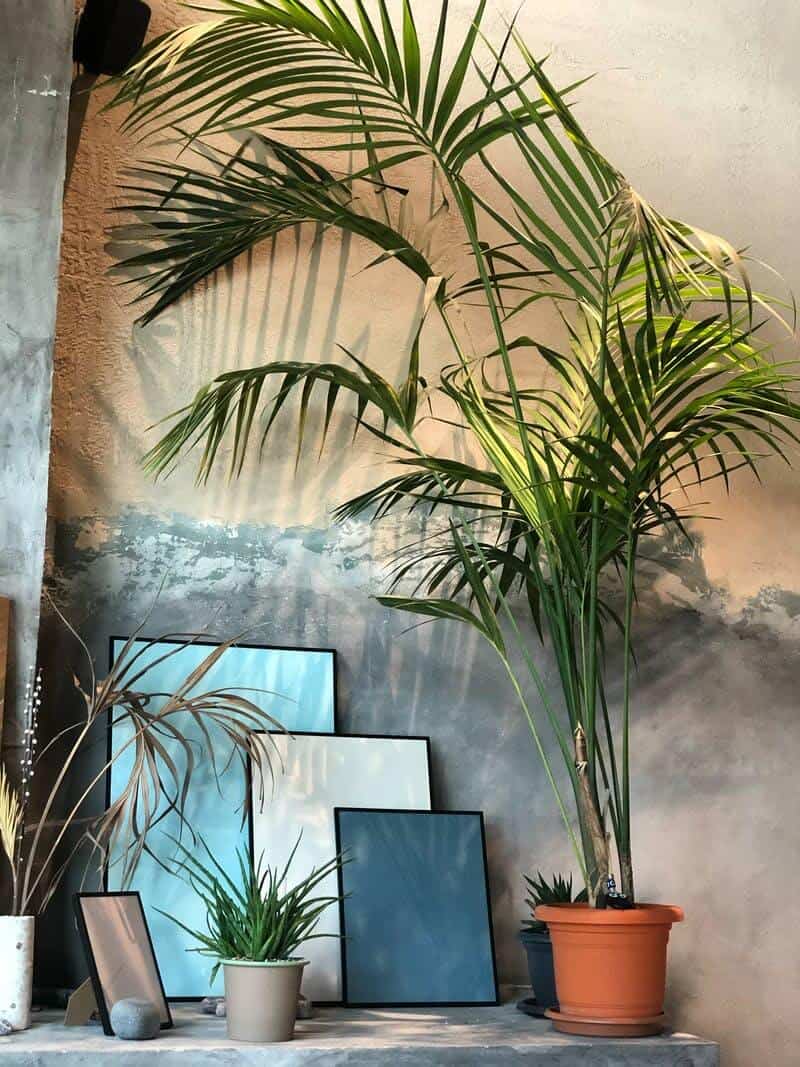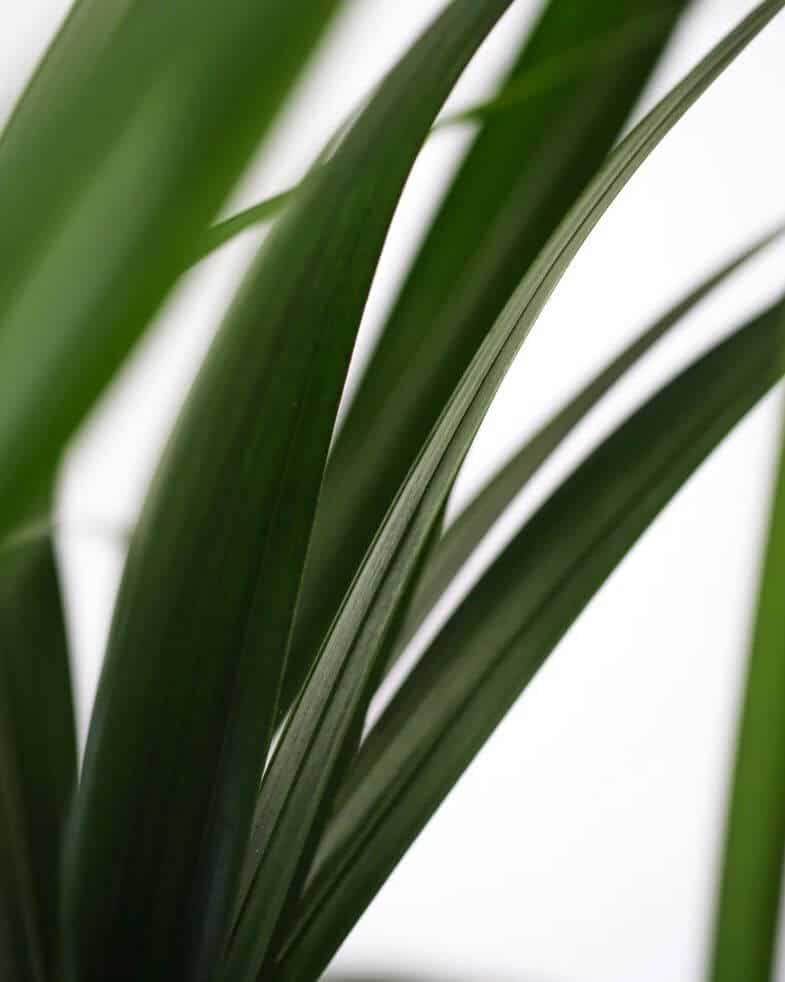Last Updated on January 8, 2023 by a Friendly Gardener
You’d love to have your own indoor palm tree but think that’s unrealistic… think again! The Kentia Palm will bring tropical flavor to any room in your home or office, regardless of the outdoor climate. The Howea Forsteriana enjoys popular names that include the “Paradise Palm”, “Sentry Palm”, and “Thatch Palm”. It is among the most popular indoor palm plants around.
Known for its capability to adapt, the Kentia Palm does well in warm or cold temperatures and adapts equally well to bright light or partial shade. It can reach impressive heights up to ten feet indoors while Kentia palms cultivated outside will tower over your home at a majestic height of forty feet. This Arecaceae family member originates on Lord Howe Island near Australia. It is now popular in homes and businesses across the globe.

Well-loved by interior decorators, Kentias are favorites in business and public settings. Historically palms rose in popularity from 1865 when famous hotels like the Langham Hotel, the London Ritz, and the New York Plaza staged palm courts within the hotels for tea dances and a variety of functions. Ocean liners followed suit with the RMS Titanic most notably featuring one.
The Kentia needs space, so plan on positioning it in a roomy space to make the most of its striking height and foliage. While a Kentia appears to feature multiple stems, this is several kentia palms cultivated together to create a fuller look.
The Kentia Palm varieties most often encountered are the Howea Belmoreana and the Howea Forsteriana. They have readily distinguished because the Belmoreana has smaller leaves that grow upward and erect. The Forsteriana, by contrast, features drooping leaflets that arch gracefully downward. Fronds are shaped like feathers in a deep green hue. Kentia trunks are green while young but become brown with maturity. Individual fronds each feature approximately 90 leaflets.
Kentia Palm Care

Soil
The Kentia is not only adaptable to climates but to soil types as well. It can thrive in loam, acidic, clay, and alkaline soil beds. Quality potting soil will be more than adequate for Kentia cultivation but mixed in horticultural sand to ensure sufficient drainage. If you’d like to blend quality soil for your Kentia, mix equal parts of peat, sand, and potting mix. Drainage efficiency should not be overlooked, so make sure your pot has a sufficient number of holes.
Light
This lovely palm loves indirect sunlight that is bright. Direct exposure to strong sunlight exposes your Kentia palm to the risk of burnt fronds. It’s not surprising that the Kentia can adapt to low light conditions when cultivated and still thrive. Growth will be slower with fewer fronds in low-light environments. In locations with full direct sunlight, the Kentia will be fine if it has reached at least five years of age.
Water

A Kentia palm generally needs only weekly moderate watering. It prefers a moist soil bed but how much you need to water will depend on the room temperature where it is located. A good rule to follow is to water when the soil’s top two inches seem dry. Excessive watering places the Kentia at risk for root rot. Ensure good drainage and water lightly for best results. Reduce watering in the winter season.
Humidity
Kentias do well in average humidity. Mist your palm weekly. Misting removes dust buildup and will aid in increasing the humidity. Use a pebble tray if the environmental air is particularly arid or dry to supplement humidity.
Temperature
The Kentia will thrive with outdoor cultivation in the USDA hardy zones 9b to 11. When cultivated indoors, this is a hardy palm that can thrive in low light, heating, dust, and in drought conditions should you forget to water it. The Kentia palm will tolerate temperatures from 25° to 100° Fahrenheit, The ideal Kentia temperature measures betwzzeen 65° and 85°F.
Feeding

The Kentia is not a heavy feeder. Apply a palm fertilizer twice annually during the growing season. A continuous-releasezz fertilizer formula is best. Avoid overfeeding the Kentia as this can cause fronds to turn brown and harm the plant.
Many palms, including the Kentia, are at risk for potassium deficiency. Consider supplementing your palm with a slow-release potassium supplement specifically formulated for palms.
Flowers and Fruit
The Kentia can flower, with flowers, bracts, stalks, and stems, together measuring as much as four feet in size. Inflorescences can produce cream-colored blooms atop spikes numbering from three to seven. The inflorescences host both male and female flowers. Flowering generally occurs in the months of November and December.
The Kentia is also capable of producing fruit, but this palm may require more than a dozen years to do so. The Kentia’s fruit is oval in shape and reddish-brown in hue.
Pests and Problems
Palms, do not, as a rule, have particular problems with pest infestations. Nonetheless, if you are underwater or overwatering a Kentia, you may be creating the ideal environment for a pest infestation. Mites and mealybugs are attracted to indoor houseplants. Sider mites may leave webbing underneath leaves while mealybugs leave white cottony deposits on plants, especially where leaves meet stems.
If you see evidence of a spider mite or mealybug infestation, apply an organic insecticide such as insecticidal soap or neem oil immediately. If you don’t have organic insecticides, spray your Kentia palm twice daily with soapy dishwater.
Yellow and brown frond tips indicate that the Kentia is not receiving enough water. Completely yellow fronds that become a brown point to overwatering.
Fronds are subject to dust buildup and need to be wiped down with a damp cloth every so often.
Pruning
Only prune your Kentia to remove dry brown or dead fronds. Pruning healthy fronds will cause trunk damage.
Repotting

Repotting your Kentia Palm will be necessary if it outgrows its container. It may also require repotting if it has consumed all its oil nutrients. The Kentia has a very delicate root system, so handle it with care when repotting. As a Kentia matures it can become top-heavy, so your palm may need a heavier pot at some point to keep it from falling over.
Kentia Palm Propagation
Seeds are used to propagate the Kentia palm. Seeds should be sown in sandy soil during spring or summer and placed in a spot with a room temperature measuring between 65° and 75° F. Lighting should be filtered or shady. Do not place seeds in the dark when awaiting germination. The Kentia palm seeds require one to three months for germination.
Toxicity and Pets
The Kentia Palm is non-toxic to cats and dogs according to the American Society for the prevention of Cruelty to Animals (ASPCA).
In Conclusion

Elegant and resilient, the Kentia is the perfect indoor palm. It is forgiving if occasionally neglected, manages in cooler temperatures, adapts to lower light conditions, and adjusts to dry air environments. When desiring an exotic addition to indoor décor, the Kentia is a winning choice.

